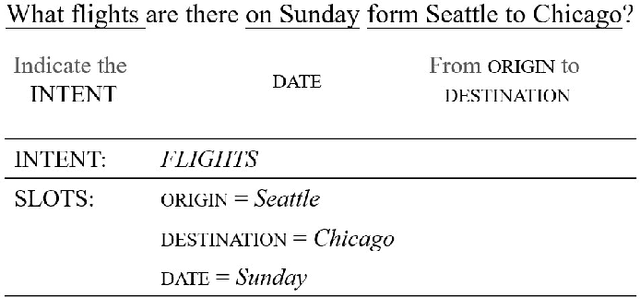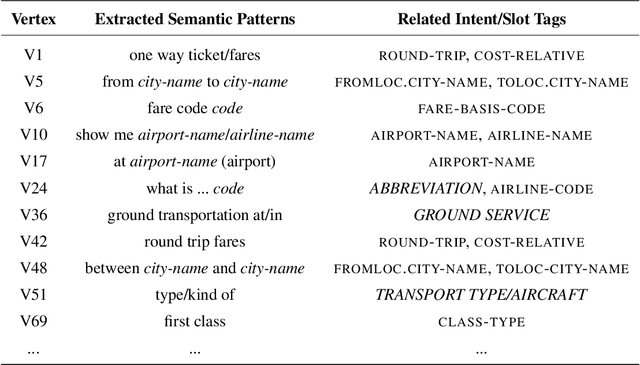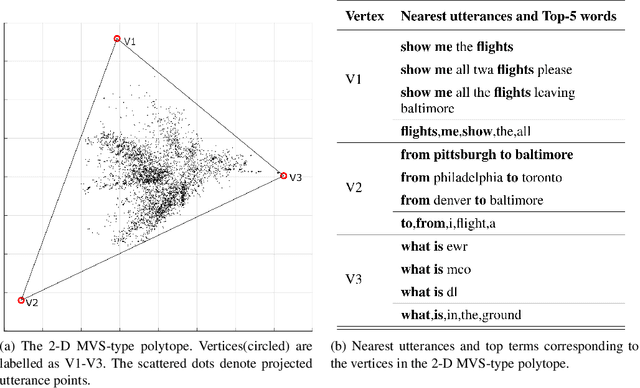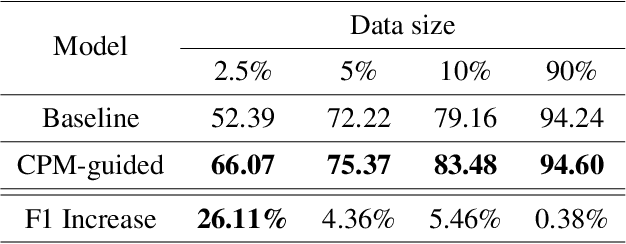King Keung Wu
Convex Polytope Modelling for Unsupervised Derivation of Semantic Structure for Data-efficient Natural Language Understanding
Jan 25, 2022



Abstract:Popular approaches for Natural Language Understanding (NLU) usually rely on a huge amount of annotated data or handcrafted rules, which is laborious and not adaptive to domain extension. We recently proposed a Convex-Polytopic-Model-based framework that shows great potential in automatically extracting semantic patterns by exploiting the raw dialog corpus. The extracted semantic patterns can be used to generate semantic frames, which is essential in assisting NLU tasks. This paper further studies the CPM model in depth and visualizes its high interpretability and transparency at various levels. We show that this framework can exploit semantic-frame-related features in the corpus, reveal the underlying semantic structure of the utterances, and boost the performance of the state-of-the-art NLU model with minimal supervision. We conduct our experiments on the ATIS (Air Travel Information System) corpus.
Open Intent Discovery through Unsupervised Semantic Clustering and Dependency Parsing
Apr 25, 2021



Abstract:Intent understanding plays an important role in dialog systems, and is typically formulated as a supervised classification problem. However, it is challenging and time-consuming to design the intent labels manually to support a new domain. This paper proposes an unsupervised two-stage approach to discover intents and generate meaningful intent labels automatically from a collection of unlabeled utterances. In the first stage, we aim to generate a set of semantically coherent clusters where the utterances within each cluster convey the same intent. We obtain the utterance representation from various pre-trained sentence embeddings and present a metric of balanced score to determine the optimal number of clusters in K-means clustering. In the second stage, the objective is to generate an intent label automatically for each cluster. We extract the ACTION-OBJECT pair from each utterance using a dependency parser and take the most frequent pair within each cluster, e.g., book-restaurant, as the generated cluster label. We empirically show that the proposed unsupervised approach can generate meaningful intent labels automatically and achieves high precision and recall in utterance clustering and intent discovery.
 Add to Chrome
Add to Chrome Add to Firefox
Add to Firefox Add to Edge
Add to Edge